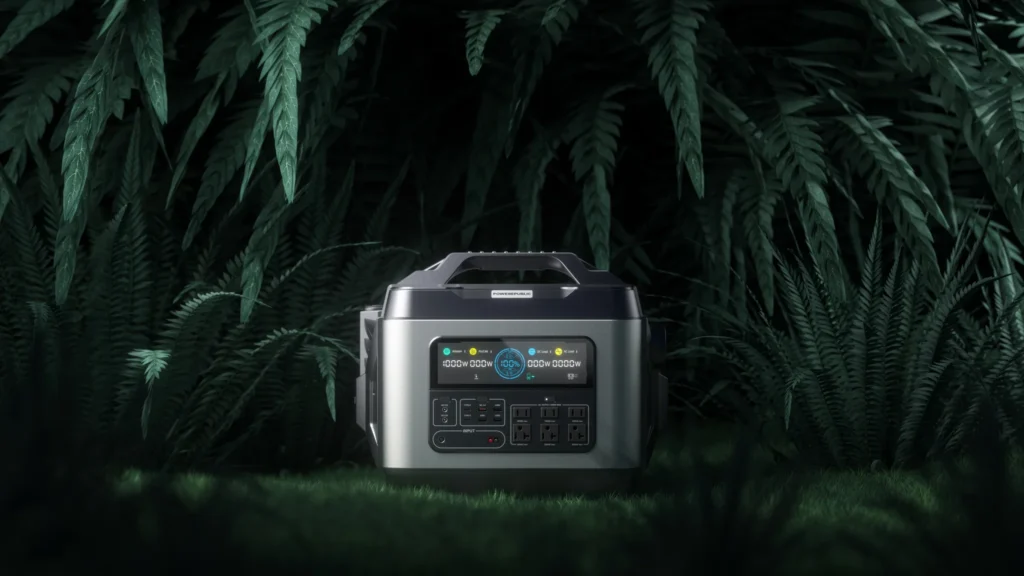Recent studies show that 58% of potential EV buyers cite range anxiety as their top concern, with 73% worried about finding charging stations during unexpected situations. While the growing charging infrastructure helps address these fears, power outages and remote locations still pose significant challenges for EV owners. Enter LiFePO4 power stations – a revolutionary solution that puts reliable backup power in your trunk. What if you could carry peace of mind with you on every journey? This guide explores how portable power stations are transforming emergency EV charging, providing practical solutions for range anxiety and power emergencies while ensuring you never get stranded with a depleted battery.
Why EV Owners Need Emergency Charging Solutions
Despite rapid growth in EV charging infrastructure, significant gaps remain that create real risks for electric vehicle owners. Recent infrastructure assessments reveal that 35% of rural areas still lack adequate charging coverage, creating dangerous “dead zones” where EVs could potentially run out of power. This challenge is compounded by increasingly frequent climate-related power outages, with utility companies reporting a 60% rise in weather-related disruptions over the past decade. EV owners face particular vulnerability during natural disasters when grid power becomes unreliable precisely when evacuation may be necessary. A comprehensive survey of 10,000 EV owners revealed that 82% have experienced at least one “close call” with depleted batteries, while 45% report avoiding certain routes or destinations due to charging uncertainty. These scenarios range from unexpected detours and traffic delays to charging station malfunctions and grid outages. The need for reliable backup charging solutions becomes especially critical when considering that the average wait time for roadside assistance in remote areas exceeds two hours, potentially leaving drivers stranded in unsafe conditions. This combination of infrastructure limitations, weather vulnerabilities, and real-world challenges underscores why emergency charging solutions are not just conveniences, but essential safety equipment for responsible EV ownership.
LiFePO4 Batteries: The Ideal Power Station Core
LiFePO4 (Lithium Iron Phosphate) technology represents a significant advancement over traditional lithium-ion batteries, particularly for EV backup applications. The chemistry’s inherent thermal stability eliminates the risk of thermal runaway, making it substantially safer than conventional lithium-ion cells – a crucial consideration when storing power equipment in your vehicle. While lithium-ion batteries typically last 500-1,500 cycles, LiFePO4 cells maintain 80% capacity beyond 4,000 cycles, translating to over a decade of reliable service for occasional EV charging needs. This extended lifespan justifies the initial investment, especially considering the critical nature of emergency power for EVs. The technology delivers an impressive energy density-to-weight ratio, packing substantial charging capacity into a form factor practical for vehicle storage. Perhaps most importantly for mobile applications, LiFePO4 batteries maintain consistent performance across extreme temperature ranges from -4°F to 140°F (-20°C to 60°C). This thermal resilience ensures reliable operation whether stored in a sun-baked trunk during summer or needed during winter emergencies. The chemistry’s stability also eliminates the need for active cooling systems, reducing complexity and potential points of failure in portable power stations.
Emergency Charging Capabilities and Solutions
Modern portable power stations have evolved to deliver exceptional EV charging capabilities through robust AC outputs and significant capacity. Leading solutions like the EcoFlow DELTA series seamlessly integrate with most EV models, including Tesla vehicles through the standard J1772 adapter, Chevrolet Bolt, Nissan Leaf, and other major brands. These systems typically offer versatile recharging options including rapid AC charging, solar compatibility for sustainable power generation, and car charging capability for extended road trips. Their compact dimensions and ergonomic designs enable convenient trunk storage without sacrificing valuable cargo space.
Step-by-Step: Emergency EV Charging with Power Stations
Before connecting a power station to your EV, determine your vehicle’s energy requirements by multiplying its efficiency rating (kWh/mile) by your desired emergency range. For safety, use only UL-certified charging equipment and inspect all cables for damage before connecting. Essential gear includes a J1772 charging adapter, protective case for connections, and weather-resistant extension cord rated for EV charging. When charging, position the power station on level ground at least 3 feet from your vehicle, ensuring proper ventilation. Monitor battery temperature through the power station’s display, particularly in extreme weather. To maximize charging efficiency, disable your EV’s climate control and unnecessary electronics during emergency charging.
Practical Field Guide: Charging Your Tesla
Tesla owners require the official J1772 adapter that comes standard with vehicles. Begin by positioning the power station and connecting it to a grounded outlet if available. Attach the J1772 adapter to your Tesla’s charging port, then connect the charging cable to the adapter. Verify proper power flow and monitor charging progress through your power station’s interface. For Model 3/Y, expect approximately 3-4 miles of range per kWh from the power station. When finished, press the charge port button on your Tesla’s screen or charging cable to release the connection, then remove cables in reverse order. Always store the adapter in your vehicle’s charging cable bag for future emergency use.
Maximizing Power Stations for Road Trips & Outages
Strategic planning transforms your portable power station from an emergency backup into a comprehensive energy solution. When mapping extended road trips, identify potential charging dead zones and mark power station recharge points every 200 miles, particularly in remote areas. Pair your power station with portable solar panels rated at 110W or higher for sustainable charging during daylight hours – optimal panel positioning at 30-45 degrees facing south can generate sufficient power to replenish your unit while parked. During power outages, implement load prioritization by dedicating 70% of capacity to EV charging while reserving 30% for essential devices like phones and medical equipment. Store your power station in a moisture-resistant container with silica gel packets, maintaining battery levels between 40-80% for optimal longevity. Monthly test cycles ensure reliability when needed most. For home integration, install a dedicated transfer switch that allows seamless transition between grid power and your portable station, creating a unified charging solution that bridges both stationary and mobile power needs.
Future-Proofing: Power Stations and EV Infrastructure
Portable power stations are evolving alongside the rapidly expanding EV charging infrastructure, offering complementary benefits that enhance the overall charging ecosystem. As vehicle-to-grid (V2G) technology becomes mainstream, these power stations are being engineered with bidirectional charging capabilities, allowing them to both charge EVs and accept power from them when needed. This integration with smart grid systems enables dynamic load balancing and participation in demand response programs. Recent advancements in LiFePO4 chemistry promise even higher energy densities and faster charging speeds, while maintaining the technology’s inherent safety advantages. When compared to traditional whole-house generators, portable power stations offer superior flexibility and cost-effectiveness for most EV owners, typically providing essential backup power at one-third the installation cost while eliminating ongoing maintenance and fuel expenses.
Empowering EV Mobility with Reliable Backup Power
LiFePO4 power stations have emerged as game-changing solutions for EV owners, offering unparalleled safety through thermal stability and reliable performance across extreme temperatures. By following proper charging protocols, maintaining equipment readiness, and integrating power stations into broader travel strategies, EV owners can effectively eliminate range anxiety and navigate power emergencies with confidence. The future of electric mobility isn’t just about expanding charging infrastructure – it’s about empowering drivers with flexible, reliable backup solutions that ensure continuous mobility regardless of circumstances. Take the first step toward true energy independence by assessing your emergency power needs and implementing a robust backup strategy. With LiFePO4 power stations, the road ahead remains open, even when traditional charging options aren’t available.






